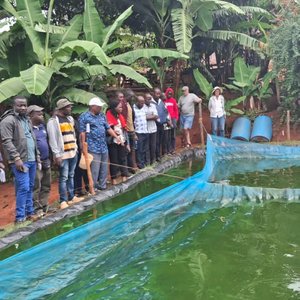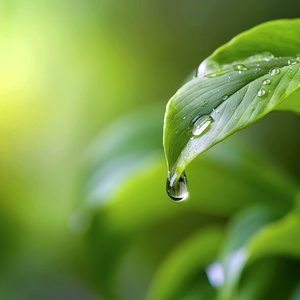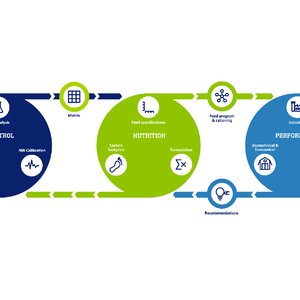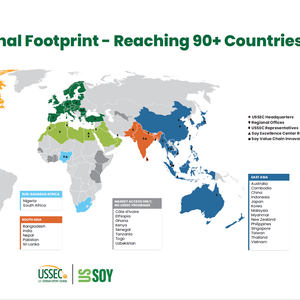At a key moment for the global aquaculture industry, Professor at the Catholic University of Temuco and Director of the Fish Nutrition and Physiology Laboratory, Dr. Patricio Dantagnan, discusses the main challenges, advancements, and opportunities facing the aquafeed sector, emphasizing the urgency of adopting sustainable and technologically advanced solutions.
Inspired by a pioneer in the field, Dantagnan recalls how, in 1995, a lecture by Dr. Marisol Izquierdo sparked his passion for fish nutrition. “I realized that the future of aquaculture in Chile and around the world would eventually hinge on the development of nutritionally balanced feeds,” he recalls. Years later, he completed his doctoral thesis under the same researcher, one of Europe’s most influential figures in this discipline.
Today, that future is here, and it faces critical challenges. “The main challenge is where to source enough ingredients to produce the amount of feed that aquaculture needs,” he notes. Sustainability, environmental impact, and food security are unavoidable issues.
New ingredients and emerging technologies
Among the most promising alternatives, Dr. Dantagnan highlights microbial-origin ingredients—such as yeasts, bacteria, and microalgae, for their nutritional value, functionality, and technological viability. “These microorganisms possess unique nutritional characteristics, and the technology for their production and scaling through fermentation is already available. Although their benefits in animal nutrition have been known for some time, only recently has their use intensified, mainly due to lower costs and increased production efficiency,” he explains. “The main challenge with these ingredients is how to meet demand at scale. Still, their use as functional components at low levels is already a reality in many formulations.”
On the other hand, he mentions that genetically modified terrestrial plants are emerging as a good alternative for supplying long-chain polyunsaturated fatty acids like EPA and DHA, especially varieties such as canola and camelina. However, he warns that restrictions still exist in some countries, and challenges persist regarding their production yields. At the same time, the agricultural sector can continue playing a key role in raw material supply, but in a sustainable and socially and environmentally friendly way.
In the realm of innovation, Dr. Dantagnan emphasizes the impact of hydrolysates, fermentation, and the use of agro-industrial waste, along with the genetic improvement of terrestrial crops. “Bioprocessing technologies will be critical in the near future,” he states. “Genetic improvement and the use of soil biostimulants to improve the nutritional quality of land-based protein inputs are shaping up as key research areas. Climate change, especially thermal stress and drought, could affect the synthesis of biocompounds relevant to fish nutrition and the nutritional quality of ingredients.”
Precision nutrition and animal health
One of the key concepts he underscores is precision nutrition, which allows diets to be tailored to the specific needs of fish, a strategy especially relevant in the face of climate change and raw material variability.
“Historically, fishmeal and fish oil were key ingredients in carnivorous fish diets, but their current low inclusion is irreversible. This has driven the use of plant-based alternatives and byproducts. However, this diversification has resulted in some nutritional deficiencies, affecting the health, quality, and performance of the fish—despite the potential of some emerging bioproducts to help address those deficiencies,” he comments. “Additionally, considering that fish are poikilothermic organisms, their nutritional requirements vary widely—especially in a context of climate change and constantly changing formulations due to new ingredient availability and production conditions. Redefining nutritional requirements at specific growth stages is one of the major current challenges,” he affirms.
Dr. Dantagnan also emphasizes the close relationship between nutrition and health: “Well-balanced diets help fish better cope with stress and pathogens.” He adds that the use of bioactive compounds and functional additives is already common practice, though further research is needed to understand their interactions and effects.
“Feed formulation has become increasingly complex, given the growing number of commercial products promising positive outcomes. However, few studies have analyzed the synergistic or antagonistic effects of combining these additives or supplements. This is a key field of research, albeit a complex one. Therefore, evaluating new products requires proper experimental design,” he warns.
Regarding gut microbiota, he highlights its critical influence on immune response and metabolic efficiency. “In fish, it has already been shown that diet alters the microbial ecosystem, and these changes are likely to affect how fish respond to stressors like high densities, handling, or pathogen exposure. One of the mechanisms most affected by dietary changes is the metabolism of lipids and essential fatty acids, which are precursors of immune-regulating compounds. In fact, disruptions in this metabolism could impact fillet quality if significant changes in gut microbiota occur due to an inadequate combination of ingredients,” he notes.
Limitations in Chile and the path toward collaborative science
One of the main barriers he identifies in Chile is the lack of trained labor in fish nutrition, which has led to low scientific productivity in the field. “This has caused most feed producers to rely on solutions developed in countries with more advanced scientific capabilities,” he comments. “The search for new ingredients and the technological development of functional products or additives requires rigorous experimental design and a strong scientific foundation. It’s not enough to validate products without understanding the biological or metabolic mechanisms behind their effectiveness. Only then can practical and replicable knowledge be generated.”
Dr. Dantagnan also criticizes the lack of collaboration and interdisciplinary work in the country: “Interaction between fish nutritionists and professionals from other disciplines is rare in Chile, which is a weakness in our research system. We need to encourage collaboration and increase scientific output in this area. On top of that, research funding has been cut in recent years while the number of researchers has increased, significantly lowering the success rate for publicly funded projects.”
“There must be a call to national agencies that fund research projects, as well as to private companies that promote innovation and development, to integrate young, promising researchers into the most active research groups and R&D teams. The culture of postdoctoral researchers, fairly paid according to their training and contributions, must be significantly strengthened, and the country should take responsibility,” he suggested.
Finally, he urges producers to get more involved in nutritional aspects to help establish links with feed manufacturers and their research centers. To young researchers, he recommends preparing for multidisciplinarity: “Nutrition intersects with all biological processes. It’s essential to interact with multiple scientific branches,” he concludes, adding that the field still urgently needs qualified PhDs.
Dr. Dantagnan projects that, in the next five to ten years, we’ll see a consolidation of precision nutrition and increased use of microbial ingredients, leading to a more diversified and species-specific feed supply.










